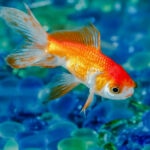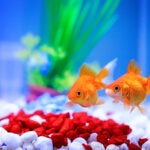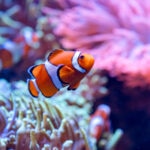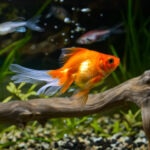The Role of pH in the Aquarium Nitrogen Cycle
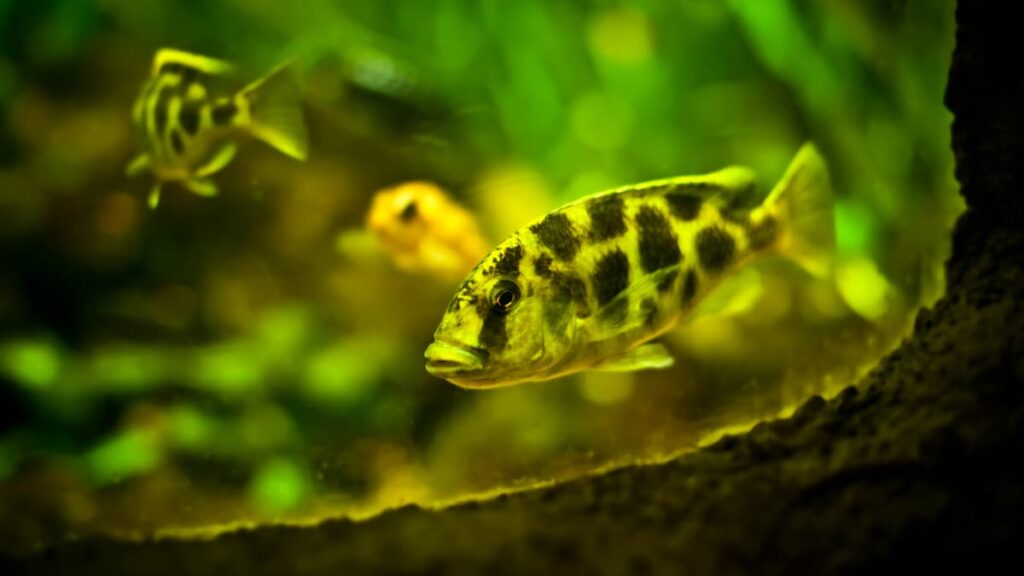
Photo by Andreas Gradin/Shutterstock.com
What Is pH?
Understanding the various stages of the nitrogen cycle is vital in preparing and maintaining a healthy environment in the aquarium. There are many factors that play a role in bringing balance to this very important cycle. We must first understand what pH is before we can understand how it fits in the equation. The pH scale goes from 0 to 14. If water contains an equal amount of hydrogen ions (H+) and hydroxide ions (OH-), it is said to be neutral (pH 7.0). An increase in the amount of hydrogen ions will cause water to become more acidic, having a low pH. Conversely, increasing the amount of hydroxide ions will cause water to become more basic (alkaline), having a high pH. The pH of water determines the solubility, or the amount that can be dissolved in it. Biological availability is also determined by pH, which is the amount that can be utilized by aquatic life. Fish waste and excess food are broken down into either ionized ammonium (NH4), or un-ionized ammonia (NH3). Ammonium is actually not harmful to fish, whereas, ammonia is toxic.
Plecostomus species can tolerate a fairly wide range of pH, but they like it on the acidic side, from 5.0 to 7.0. Photo by Aaron Norman.
The pH of the water is the determining factor that causes waste and decomposing fish food to become ammonium, or ammonia. Lower pH levels will have a higher concentration of ammonium, and higher pH levels will have higher concentration of ammonia. The concentration levels are directly proportional to the pH. As the pH rises, the concentration (toxicity) of the ammonia also increases. When the pH level increases above 9, most of the ammonium in the water is converted into toxic ammonia (NH3), which can kill fish. These levels can also cause gill and kidney damage, impaired growth, and decreased resistance to disease.
Angelfish do well with a pH from 6.5 to 7.0.
Essential Aquarium Bacteria
The Nitrosomonas bacterium feed on ammonia and converts it into nitrite (NO2). Nitrite is slightly less harmful to fish than ammonia, but it is still not good to have around. Nitrites make it more difficult for fish to take up oxygen (O2). Thankfully, there is another bacterium that helps with this stage of the cycle. The Nitrobacter bacterium feeds on the nitrites in the water and converts them into nitrate (NO3). Fish can tolerate high levels of nitrate much better than high levels of ammonia and nitrite. Plants are very helpful in the nitrate phase of the nitrogen cycle because they feed on nitrates. Once a system has a sufficient number of the aforementioned bacteria to fully process the ammonia and nitrites, the system is considered to be “cycled.”
This brings us back to pH. If the pH drops below 6 in a given system, the Nitrosomonas bacterium will not adequately process the ammonia in the water. If the pH eventually gets low enough, the nitrogen cycle will cease to function all together. If the pH levels rise above 9, as mentioned earlier, very high concentrations of toxic ammonia (NH3) are present. The nitrogen cycle itself tends to reduce the pH of a system. Most freshwater fish would fall into a pH range between 5.5 and 7.2, with a few exceptions at both the high and the low end. It is not just fish that need to have an appropriate pH to thrive. Live plants do best in a pH range between 6.5 and 7.5. Beneficial bacteria prefer a slightly higher range, from 7.0 to 8.0. In general, a good pH range that would satisfy most fish, along with live plants and bacteria would be 7.0 to 7.2. It is important to note that pH in the aquarium is not completely stable, with small fluctuations occurring throughout the day and night. Many things can affect the stability of the pH within a system. Aeration, gravel, fish tank decorations, temperature, and nitrate levels are just some of these.
How To Change the pH Level in Your Aquarium
Some of these methods are definitely safer than others. Over time, the pH levels in the aquarium will drop in small increments. The best way to counteract this phenomenon is by doing regular water changes. This will help keep the pH more consistent over long periods of time. Using constant aeration in the tank can slightly elevate the pH levels. The high volumes of oxygen continuously introduced into a system will drive down the carbon-dioxide levels, which causes pH to rise. Crushed coral used as a substrate will naturally increase the pH without harming the fish. Larger rocks used as décor, along with shells, will also help increase the pH a bit. Calcium carbonate can be added to increase the pH in the water, and will stop dissolving at a pH of 7.4. As a last resort, the use of chemicals can be used to raise pH. Be vigilant when using this method as it can cause spikes in the pH levels, and does not achieve long term consistency.
Discus fish are notoriously sensitive to elevated pH levels in the aquarium and need very soft water and pH ranging from 5.0 to 6.5.
Just as there are ways to increase the pH levels, there are ways to decrease pH as well. Most will agree that lowering the pH in the aquarium is more difficult than raising it. The most effective way to lower the pH is to filter through peat moss. This is a natural method that is very safe. Aquarium water maintained at higher temperatures is usually slightly acidic, meaning pH levels just under 7.0. Increased nitrate levels can lower the pH, however, this should not be used as a means to consistently keep pH levels low, as high nitrate levels can be harmful to fish. Planted tanks running carbon-dioxide will have lower pH, as well as, consistent fluctuations in pH from day to night, due to plant photosynthesis. Décor items such as plants and driftwood will help naturally reduce the pH levels in a system. Once again, Chemicals can be used to reduce pH levels, but is the least recommended.
Deliberately altering the pH while fish are in the water can be risky. Too much of a change can be catastrophic. The pH scale is logarithmic, meaning each whole number change results in a factor of 10. For example, a pH of 5.0 is 10 times more acidic than a pH of 6.0. Moreover, a pH of 5.0 is 100 times more acidic that a pH of 7.0. It is very important to use water test kits before starting up a system. Depending on location, tap water can have a large range of pH levels. Also, researching what pH ranges specific species require is important. Some fish, such as African cichlids, do well in harder water with higher pH levels.
Not all fish thrive in the same pH range. In general, saltwater fish prefer higher pH levels than their freshwater cousins. Most saltwater fish will be happy with a pH of 8.0, or even slightly higher. Again, the majority of freshwater fish are comfortable in a pH range between 5.5 and 7.2. The main exception to the freshwater range is African cichlids. These fish like harder water (water that is high in mineral content) with high pH. African cichlids from Lake Malawi like pH from 7.7 to 8.6, whereas African cichlids from Lake Tanganyika prefer pH from 7.3 to 8.0. South American cichlids, on the other hand, do best in pH 6.5 to 7.2. Discus fish are notoriously sensitive to elevated pH levels in the aquarium. They need very soft water and pH ranging from 5.0 to 6.5. Plecostomus species can tolerate a fairly wide range of pH, but they like it on the acidic side, from 5.0 to 7.0. Angelfish do well with a pH from 6.5 to 7.0, and goldfish like it a bit higher, about 7.0 to 7.5. These are just a few examples of how bio-diverse the aquatic life can be in the aquarium, and this is just a single water parameter.
What Is KH?
Most of us in the fish keeping hobby are at least vaguely familiar with pH in the aquarium. There is, however, another water parameter that has a very close relationship with pH, but is much less understood. The water KH, or carbonate hardness, is the water’s ability to absorb and neutralize acid. KH is also referred to as alkalinity, not to be confused with alkaline on the pH scale. It is for this reason that aquarists use the term basic when referring to the pH scale instead of alkaline, and use the term alkalinity in reference to KH. Having a low KH will cause more fluctuations in the pH of the water, which can cause what is referred to as pH shock. This can happen as a result of CO2 production from fish, causing large pH downshifts, which lessen the water’s buffering ability (KH). Saltwater aquariums have a naturally high KH, but safe KH levels for freshwater should be 4.5 dKH or higher. PH shock will occur if the KH drops below 2 or 3 dKH. If water KH is low in the aquarium, regular water changes will help increase these levels. A good natural KH buffer is crushed coral substrate, but most KH buffers are based on baking soda (sodium bicarbonate, NaHCO3). Having higher KH is definitely healthier for fish. The pH will have more stability and be much less likely to crash.
Understanding the concepts discussed will help ensure proper water conditions for the specific species of fish that are being kept. Test strips and kits are relatively inexpensive, and can help any hobbyist achieve long term success. Once again, depending on location, tap water can vary substantially from one location to another. If your tap water does not have the pH range you desire, try some of the natural ways discussed to raise or lower the levels. If at all possible, try to stay away from chemicals to alter the pH levels in your aquarium; the risk definitely outweighs the reward by doing this. PH should be checked at least every 3 or 4 weeks to adequately monitor stability in your system. PH plays such a vital role in the ever important nitrogen cycle and overall quality of the water in a system. Many hobbyists overlook this parameter when cycling a system and it can be costly. Understanding the cycle, and more importantly, how pH affects the cycle, is going to make keeping an ideal environment for fish possible.
